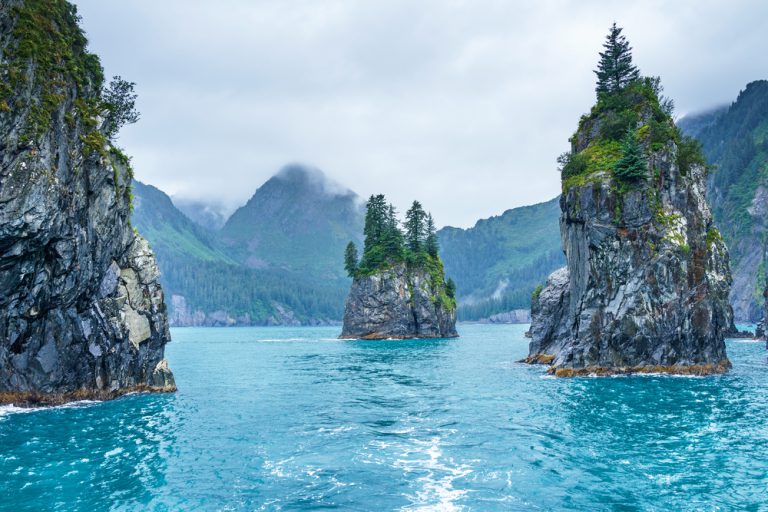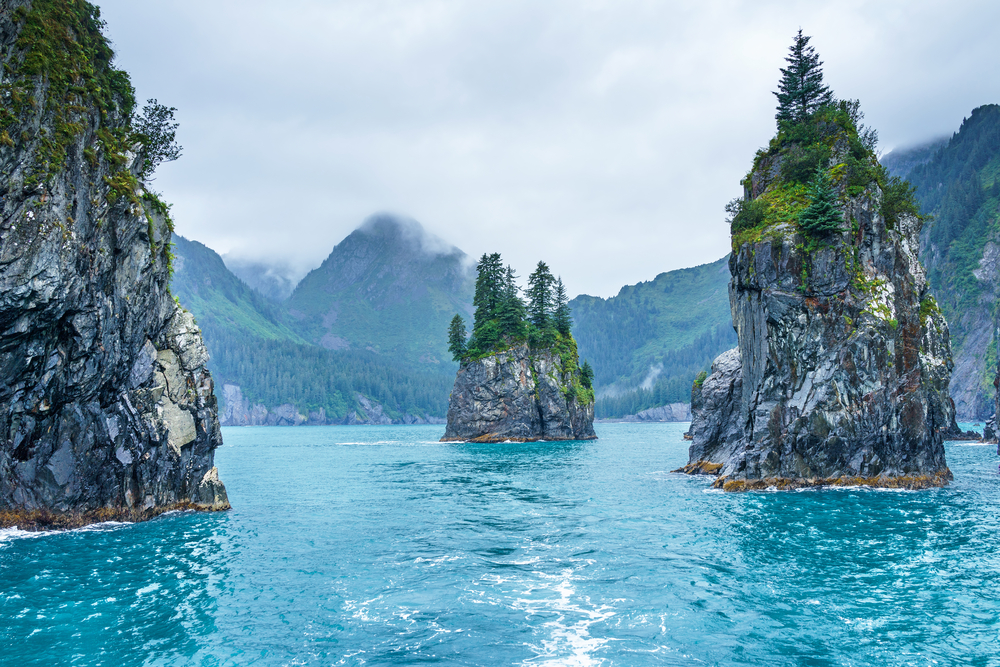
Tucked into the Kenai Peninsula — already considered one of the adventure epicenters of the state, given that it’s comprised of 90% wilderness — Kenai Fjords National Park is a truly wild experience for an outdoor enthusiast of any stripe. From glacial ice fields to coastal fjords and the incredible diversity of plant and animal life sustained by this seemingly inhospitable landscape, there’s no denying that a trip to this protected wilderness is a once-in-a-lifetime opportunity, whether you’re there for intense hiking and backcountry camping or simply to stand in awe of your surroundings and snap some photos.
Along with exemplifying this unique glacial ecosystem (and also, unfortunately, the climate change that has wrought massive shrinkage on this ancient ice field), Kenai Fjords also hold an important human history. This dynamic landscape was first traveled upon and utilized by the Sugpiaq, or Alutiiq, people more than a thousand years ago. By learning and relying on the natural rhythms of this place, they were able to sustain themselves here and throughout the southern coastal Alaska region, following time-honored traditions of subsistence hunting and gathering.
The Indigenous History of Kenai Fjords National Park

The Alutiiq people understood the greatest gift this part of the world has to offer: the ocean, and the abundant fruits that can be sustainably pulled from it. The tribe regularly fished for salmon, halibut, and whale, whose protein and blubber formed major dietary staples and helped keep them warm and well through Alaska’s intense winters.
Additionally, they supplemented their seafood diet with extras gleaned on land, from game animals as well as edible and medicinal plants that grow seasonally throughout the region. Cunning and determined, Alutiiq people also found ways to keep themselves insulated from the intense winter weather that falls here yearly, sinking themselves into semi-subterranean dwelling structures that helped keep them warm under the deluge of snow.
The National Park Service website offers more information about the Alutiiq people, as well as the rest of the human history of Kenai Fjords National Park, which you can read in detail here. Additionally, many museums in the state’s capital city of Anchorage offer exhibits that help visitors glean insights into this beautiful historic culture, which still thrives today, including The Alaska Native Heritage Center and The Anchorage Museum.
Paying Respect to the Land
Learning about the rich Indigenous history undergirding our most beautiful protected places today helps give us a fuller understanding of our place, in contextual situation, on those lands. Write-ups like this one and the exhibits available at the above-mentioned museums are a great place to start — but still, education is just that: a starting point.
No matter where you are on U.S. soil, you’re occupying lands that have ancient ties to a culture that was largely silenced both physically and metaphorically. Going out of your way to discover whose culture, exactly, that is, is a great way to nod your respect to those people. Native Land is a great, free web tool that can help.
Additionally, it’s up to us to continue to enact the stewardship and symbiosis that was so elegantly demonstrated to us by these cultures for centuries. As modern visitors, a great way to enact this is to follow Leave No Trace principles, which offer easy-to-follow guidelines that help keep our impact on natural spaces as low as possible.
For example, Leave No Trace suggests traveling and camping only on durable surfaces, leaving behind any natural “souvenirs,” no matter how tempting they might be, and packing out all the garbage you pack in — as well as paying respect to local wildlife (and staying safe!) by keeping your distance. While some of these are simply common sense, it’s helpful to have guidelines to follow, so be sure to let your travel-ready friends know about the seven principles, too!
We hope this information helps add nuance and beauty to your journey to Kenai Fjords National Park — and beyond.

